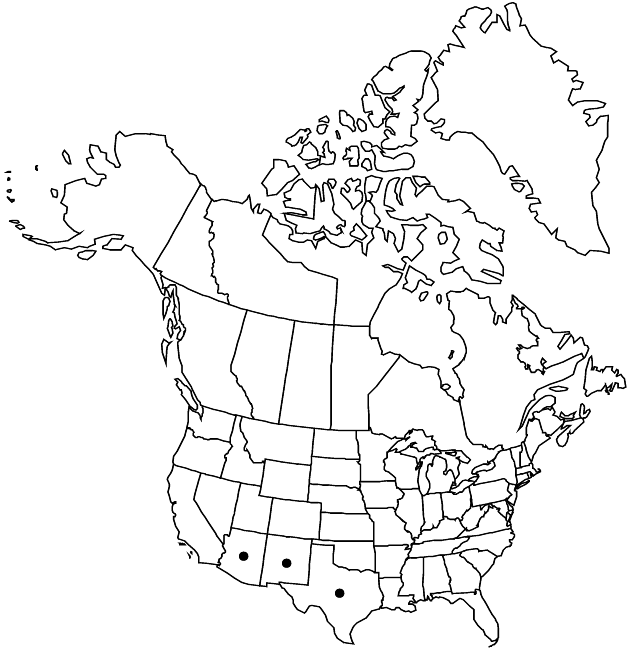Ageratina rothrockii
Phytologia 19: 216. 1970.
Perennials, (20–)40–70(–150) cm (slender, fibrous-rooted crowns, with slender rhizomes). Stems ascending to erect, puberulent to glabrate. Leaves opposite; petioles 2–20 mm; blades (3–5-nerved) lanceolate to lanceolate-ovate, mostly 3–6 × (1.5–)2–3 cm, bases obtuse to truncate, margins serrate to crenate, apices acute to acuminate, sparsely puberulent abaxially, mostly along nerves. Heads clustered. Peduncles 5–12(–20) mm, puberulent. Involucres 5–7 mm. Phyllaries: apices acute, abaxial faces glabrous or glabrescent, eglandular. Corollas white, lobes short-villous. Cypselae sparsely and finely strigose-hirsute. 2n = 85 [ca. 100, fide A. M. Powell on label].
Phenology: Flowering (Jul–)Aug–Oct.
Habitat: Rocky slopes and ledges, in oak-juniper, pine-oak, pine, aspen, and spruce-fir woodland
Elevation: 1700–2400 m
Distribution

Ariz., N.Mex., Tex., Mexico (Chihuahua, Coahuila, Durango, Sonora).
Discussion
Ageratina rothrockii is similar to A. altissima, probably its western vicariant, and the two perhaps would be justifiably treated as conspecific.
Selected References
None.